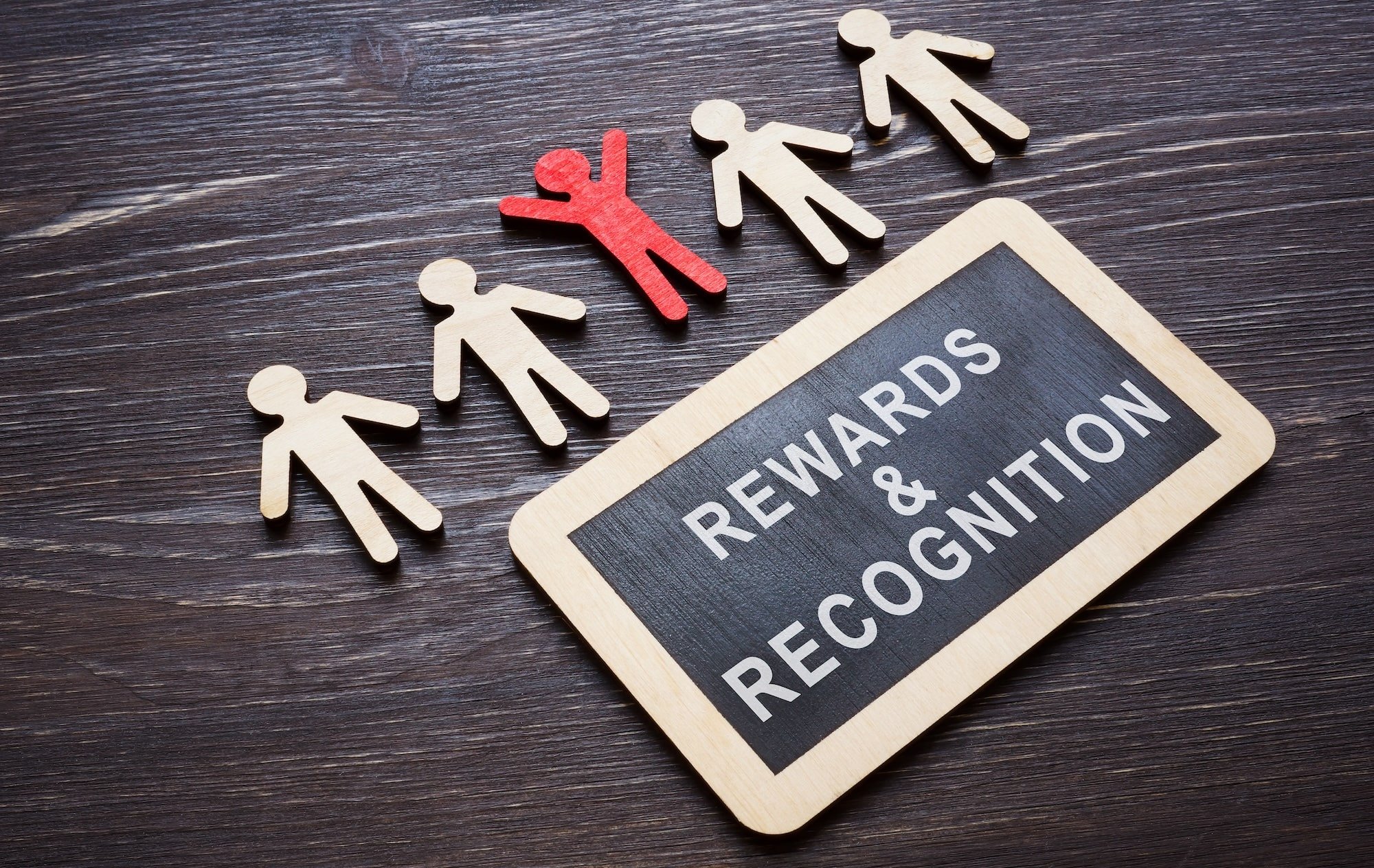People are all different. Sometimes we find these differences helpful and engaging, and other times we may find them puzzling. We see this as especially true when it comes to a cultural staple like employee recognition. We hear, “They recognise for everything! It doesn’t feel genuine!” or “They’re so stingy with recognition. I don’t get the sense anything I do will ever be good enough.”
Sometimes these questions or concerns come from differences in how people perceive others and solve problems (rather than a lack of genuine appreciation for their work).
Here at Reward Gateway, each new starter takes the Insights Assessment to discover how each personality profile helps the business. It all has to do with which colour (or colours) employees lead with. I recently spoke with our “Insights Guru,” Gemma Matthews, to learn how the four different styles of recognition impact the workplace.
Breaking down what the Insights colours mean
Gemma helped explain why it’s so important to understand others’ styles before strategically recognising employees in the workplace, and I want to share that with you. Below is an introduction to the four different Insights colours and their preferences:
| Fiery Red | People with a preference for dominant "Fiery Red" energy are extroverted and have high energy. They are action-oriented and always in motion. They will approach others in a direct, authoritative manner, radiating a desire for power and control. |
| Sunshine Yellow | People with a preference for dominant "Sunshine Yellow" energy are strongly extroverted, radiant, and friendly. They are usually positive and concerned with good human relations. They will approach others in a persuasive, democratic manner, radiating a desire for sociability. |
| Earth Green | People with a preference for dominant "Earth Green" energy are introverted with a strong focus on values and in-depth relationships. They want others to be able to rely on them. They prefer democratic relations that value the individual and are personal in style, radiating a desire for understanding. |
| Cool Blue | People with a preference for dominant "Cool Blue" energy are introverted and have a desire to know and understand the world around them. They prefer written communication in order to maintain clarity and precision, radiating a desire for analysis. |
It’s no surprise that people prefer different styles of communication and ways to give and receive recognition. But keep in mind, you can maximise your efforts and improve engagement through a tool like an employee recognition program.
Keep in mind that people are rarely all one thing or another, but hopefully these general categories will give you insight into how you might better work with and appreciate those around you.
Make sure to understand others’ preferences in order to prevent misunderstandings and ensure your appreciation is well received on the other end!
Precise and deliberate (Insights = Cool Blue)
How they recognise: People who tend to be more precise and deliberate expect a lot from themselves and from others. They may not see something as worthy of appreciation unless it goes significantly above and beyond. They tend to be formal in how they deliver feedback.
These individuals are introverted and their face and words may not show excitement or enthusiasm while they give feedback – but they will display this in other ways. Some may find this disheartening, but these high expectations are one of the ways they keep their team on track.
Be assured they are holding themselves to the same high standards that they hold others to! People who fall into this category may benefit from thinking, “Who is helping us get better and achieve our goals?” as a way to find recognition to highlight.

How you should recognise: When others recognise someone who is naturally very precise or deliberate, they may be met with resistance rather that appreciation. You may hear, “But the project isn’t yet done – let’s wait to see how it turns out before we celebrate.” or “I was just doing my job and I made some mistakes.”
Remind this person to celebrate the “small wins,” and remember they may not be comfortable with grandiose public displays of appreciation. They are less likely to appear excited by the praise, but this doesn’t mean they haven’t heard it. Focus on the facts of how their work is impacting others to make it more likely they will hear the recognition.
Enthusiastic and sociable (Insights = Sunshine Yellow)
How they recognise: People who tend to be more sociable and enthusiastic will display that excitement when they recognise and will be more likely to recognise often. You'll know when they're happy, and people are likely to find them pleasant and fun to work with (and for).
They may be less likely to include details about the actions that are leading to the recognition and will likely lead with emotion when they praise. Despite their best intentions, people may start to wonder if the high-energy recognition is truly heartfelt without specifics and discussion of the impact people are having. If their recognition doesn’t seem to be well-received, they may feel hurt and stop sharing the recognition.

How you should recognise: People who present themselves as enthusiastic and sociable are more likely to be looking for consistent, positive feedback. It'll fuel and motivate their performance. If you do have constructive feedback for them, you will be more successful if you start with the positive so they feel “seen.”
Others of different styles may see this behaviour as shallow or ego-driven, but when enthusiastic or sociable people get the consistent recognition, their positive energy can support the whole team to be better.
Determined and competitive (Insights = Fiery Red)
How they recognise: People who tend to be more determined and competitive will love achievement, but may not want to spend too much time celebrating a win before they move onto the next goal. They will ask a lot of those around them – but may not seem to understand the impact of these requests on others.
They may assume everyone is as focussed on the results as they are! When they force themselves to slow down and appreciate the efforts of others, they will benefit from sharing what it was that people did to support a result, rather than just talking about the result itself.

How you should recognise: People who present themselves in this way will find receiving recognition natural, but won’t want to spend too much time delving into the recognition. They may benefit from taking time to think through – not just the win – but how they helped contribute to the win.
They may seem to get impatient with too much debrief after a result. Don’t feel offended if they don't open up or seem grateful for the recognition on the surface, but feel reassured that deep down it means a lot to them.
Encouraging and patient (Insights = Earth Green)
How they recognise: People who present themselves as encouraging and patient tend to be very thoughtful in how they recognise others. They will take the time to personalise the message and will be seen as very genuine.
They may be especially good at one-on-one recognition and may need to be encouraged to share the recognition across groups to elevate the story for others to learn from.
As these folks will likely not be as comfortable with constructive feedback, people around them will know how they are appreciated, and may not realise they have room for improvement.

How you should recognise: Those who are encouraging and patient will especially want to feel that the recognition they're receiving is genuine. As with all the groups, taking time to share what they did and why it was important – especially how it fulfils on the higher purpose or values of the organisation – will be very well received.
This group is the most likely to thank you for thanking them, but then may try to deflect the praise unto others in the group that contributed to the success.
Remember, while few people will fall neatly into just one of these categories, you hopefully recognised some aspects of yourself and others in these descriptions. Research shows that everyone wants recognition but keep in mind that how they receive it or provide it to others may differ.
Great teams are made up of diversity of thought: A team of all sociable people may struggle to stay on task, and a team of all precise people may struggle to call a project complete.
It is the combination of all these styles working together that helps bring diversity to teams and moves innovation forward.
Recognition is just one piece of the puzzle needed to start improving collaboration and creating the environment for motivated employees. Next time you recognise others, keep these tips in mind, and let us know if it helps!
%20(1).jpeg) Alexandra Powell
Alexandra Powell



